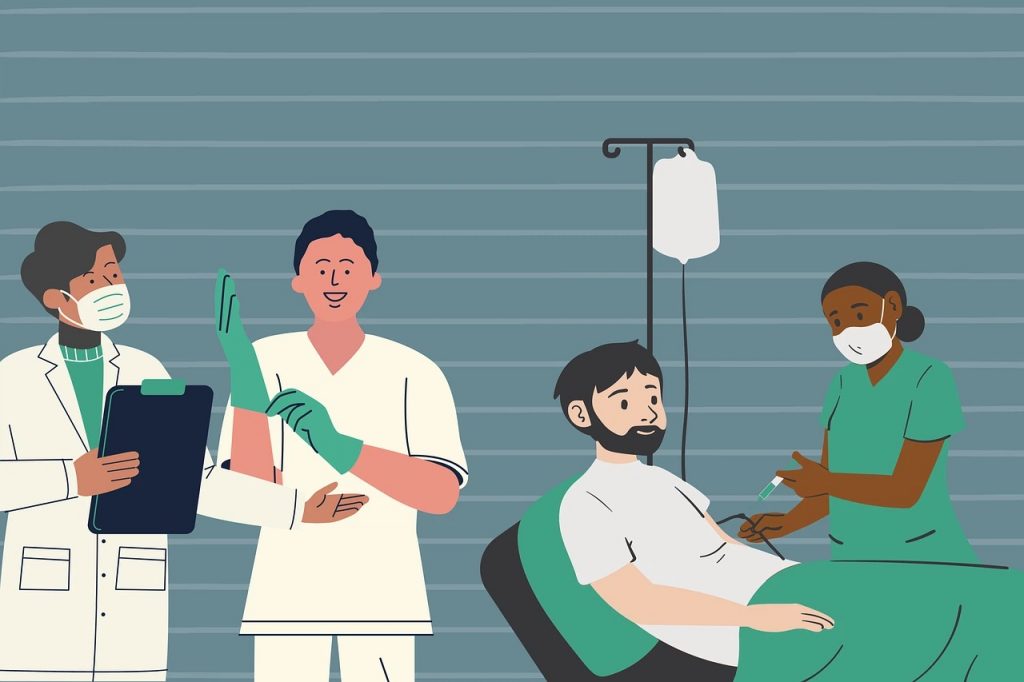
2021 marked the re-birth of my original Blogging Innovation blog as a new blog called Human-Centered Change and Innovation.
Many of you may know that Blogging Innovation grew into the world’s most popular global innovation community before being re-branded as InnovationExcellence.com and being ultimately sold to DisruptorLeague.com.
Thanks to an outpouring of support I’ve ignited the fuse of this new multiple author blog around the topics of human-centered change, innovation, transformation and design.
I feel blessed that the global innovation and change professional communities have responded with a growing roster of contributing authors and more than 15,000 newsletter subscribers.
To celebrate we’ve pulled together the Top 100 Innovation and Transformation Articles of 2021 from our archive of over 700 articles on these topics.
We do some other rankings too.
We just published the Top 40 Innovation Bloggers of 2021 and as the volume of this blog grows we may bring back a monthly ranking to complement this annual one.
But enough delay, here are the 100 most popular innovation and transformation posts of 2021.
Did your favorite make the cut?
1. All Leadership is Change Leadership – by Randy Pennington
2. Next Generation Loyalty – Part One – by Braden Kelley
3. Visual Project Charter™ – 35″ x 56″ (Poster Size) and JPG for Online Whiteboarding – by Braden Kelley
4. Where Do Innovation Strategies Usually Go Wrong? – by Jesse Nieminen
5. Black Friday Shows No Loyalty – by Braden Kelley
6. The Fail Fast Fallacy – by Rachel Audige
7. Top 40 Innovation Bloggers of 2020 – by Braden Kelley
8. What is Human-Centered Change? – by Braden Kelley
9. 10 Clever Ways to Stop Ideation Bullies from Hogging Your Brainstorming Sessions – by Howard Tiersky
10. 50 Cognitive Biases Reference – Free Download – by Braden Kelley
11. Free Customer Experience Maturity Assessment – by Braden Kelley
12. The Human-Centered Change Methodology – by Braden Kelley
13. Innovation vs. Invention vs. Creativity – by Braden Kelley
14. America Drops Out of the Ten Most Innovative Countries – by Braden Kelley
15. The One Movie All Electric Car Designers Should Watch – by Braden Kelley
16. Nine Innovation Roles – by Braden Kelley
17. No Regret Decisions: The First Steps of Leading through Hyper-Change – by Phil Buckley
18. Free Innovation Maturity Assessment – by Braden Kelley
19. Myths About Physician Entrepreneurs – by Arlen Meyers
20. Human-Centered Change – Free Tools – by Braden Kelley
21. The Five Keys to Successful Change – by Braden Kelley
22. Discipline Has a Role in Innovation – by Jesse Nieminen
23. Advances in the Management of Worthless Meeting Syndrome – by Arlen Meyers
24. 550 Quote Posters – by Braden Kelley
25. The Jobs-to-be-Done Playbook – by Braden Kelley
26. We Need a More Biological View of Technology – by Greg Satell
27. Free Human-Centered Change Tools – by Braden Kelley
28. Stoking Your Innovation Bonfire – by Braden Kelley
29. The Pyramid of Results, Motivation and Ability – by Braden Kelley
30. Experience Thinking – The Next Evolution for Design Thinking – by Anthony Mills

31. Scaling Innovation – The What, Why, and How – by Jesse Nieminen
32. Charting Change – by Braden Kelley
33. The Experiment Canvas™ – 35″ x 56″ (Poster Size) – by Braden Kelley
34. To Change the World You Must First Learn Something About It – by Greg Satell
35. Digital Transformation Virtual Office Hours – Session One – by Braden Kelley
36. Lead Innovation, Don’t Manage It – by Arlen Meyers
37. Are doctors wasting their time on entrepreneurship? – by Arlen Meyers
38. What is design thinking? – EPISODE FIVE – Ask the Consultant – by Braden Kelley
39. Zoom Tutorial – Amazing New PowerPoint Background Feature – by Braden Kelley
40. COVID-19 Presents an Opportunity to Create an Innovation Culture – by Pete Foley
41. Increasing Organizational Agility – by Braden Kelley
42. Innovation Requires Going Fast, Slow and Meta – by Greg Satell
43. Remote Project Management – The Visual Project Charter™ – by Braden Kelley
44. Is innovation everyone’s job? – by Braden Kelley
45. What is your level of Innovation Maturity? – by Braden Kelley
46. Flaws in the Crawl Walk Run Methodology – by Braden Kelley
47. Innovation Teams Do Not Innovate – by Janet Sernack
48. We’re Disrupting People Instead of Industries Now – by Greg Satell
49. Don’t Forget to Innovate the Customer Experience – by Braden Kelley
50. Change Management Needs to Change – by Greg Satell

51. Everyone hates to fail, why do you? – by Janet Sernack
52. Going with the Flow – by John Bessant
53. Can You Be TOO Strategic? – by Howard Tiersky
54. Competing in a New Era of Innovation – by Greg Satell
55. Fast Company is Wrong – by Braden Kelley
56. A New Age Of Innovation and Our Next Steps – by Greg Satell
57. Avoid the Addition Bias – by Paul Sloane
58. Visualizing Project Planning Success – by Braden Kelley
59. Innovation Ecosystems and Information Rheology – by Arlen Meyers
60. Rise of the Evangelist – by Braden Kelley
61. Creating 21st Century Transformational Learning – by Janet Sernack
62. Re-Skilling and Upskilling People & Teams – by Janet Sernack
63. Creating a Movement that Drives Transformational Change – by Braden Kelley
64. How to Scale Your Culture – by Arlen Meyers
65. A Trigger Strategy for Driving Radical, Transformational Change – by Greg Satell
66. Human-Centered Innovation Toolkit – by Braden Kelley
67. You Must Play and Experiment to Create and Innovate – by Janet Sernack
68. Managing Both the Present and the Future – by Janet Sernack
69. Why Change Failure Occurs – by Greg Satell
70. Developing a Future-Fitness Focus – by Janet Sernack
71. Using Intuition to Drive Innovation Success – by Braden Kelley
72. The Academic Intrapreneur Dossier – by Arlen Meyers
73. The Rise of Employee Relationship Management (ERM) – by Braden Kelley
74. An Example of Successful Alchemy – by John Bessant
75. The Dreaded Perfect Entrepreneur – by Arlen Meyers
76. Should intrapreneurs really ask for forgiveness and not permission? – by Arlen Meyers
77. Don’t Stop Thinking About Tomorrow – by Robert B. Tucker
78. Importance of Long-Term Innovation – by Greg Satell
79. Co-creating Future-fit Organizations – by Janet Sernack
80. What you should learn from the Google Health failure – by Arlen Meyers

81. Teaching to Win the 4th Industrial Revolution – by Arlen Meyers
82. Catalysing Change Through Innovation Teams – by Janet Sernack
83. Innovation and the Scientific Method – by Jesse Nieminen
84. Being Too Focused on the Test is Dangerous – by Arlen Meyers
85. Architecting the Organization for Change – by Braden Kelley
86. Healthcare Jugaad Innovation of a 17-Year-Old – by Braden Kelley
87. New Capability Mapping Tools for Business Architects – by Braden Kelley
88. How can I create continuous innovation in my organization? – EPISODE TWO – Ask the Consultant – by Braden Kelley
89. Thank You for Your Thinkers50 Nominations – by Braden Kelley
90. Preparing for Organizational Transformation in a Post-COVID World – by Greg Satell
91. Why Change is Hard – by Braden Kelley
92. Building a Better Change Communication Plan – by Braden Kelley
93. What is digital transformation? – EPISODE THREE – Ask the Consultant – by Braden Kelley
94. ACMP Standard for Change Management® Visualization – 35″ x 56″ (Poster Size) – Association of Change Management Professionals – by Braden Kelley
95. Borrow an Idea from a Different Field – by Paul Sloane
96. How to Go From Nail It to Scale It – by Arlen Meyers
97. Innovation in the time of Covid – Satisfycing Organizations – by Pete Foley
98. Sickcare Culture of Conformity versus a Culture of Creativity – by Arlen Meyers
99. Start 2021 with a Free Innovation Audit (Now in Portuguese or English) – by Braden Kelley
100. Outsmarting Those Who Want to Kill Change – by Greg Satell
Curious which article just missed the cut? Well, here it is just for fun:
101. Why so much medical technoskepticism? – by Arlen Meyers
These are the Top 100 innovation and transformation articles of 2021 based on the number of page views. If your favorite Human-Centered Change & Innovation article didn’t make the cut, then send a tweet to @innovate and maybe we’ll consider doing a People’s Choice List for 2021.
If you’re not familiar with Human-Centered Change & Innovation, we publish 1-5 new articles every week focused on human-centered change, innovation, transformation and design insights from our roster of contributing authors and ad hoc submissions from community members. Get the articles right in your Facebook feed or on Twitter or LinkedIn too!
Editor’s Note: Human-Centered Change & Innovation is open to contributions from any and all the innovation & transformation professionals out there (practitioners, professors, researchers, consultants, authors, etc.) who have a valuable insight to share with everyone for the greater good. If you’d like to contribute, contact us.
 Sign up here to get Human-Centered Change & Innovation Weekly delivered to your inbox every week.
Sign up here to get Human-Centered Change & Innovation Weekly delivered to your inbox every week.

![]() Sign up here to get Human-Centered Change & Innovation Weekly delivered to your inbox every week.
Sign up here to get Human-Centered Change & Innovation Weekly delivered to your inbox every week.









